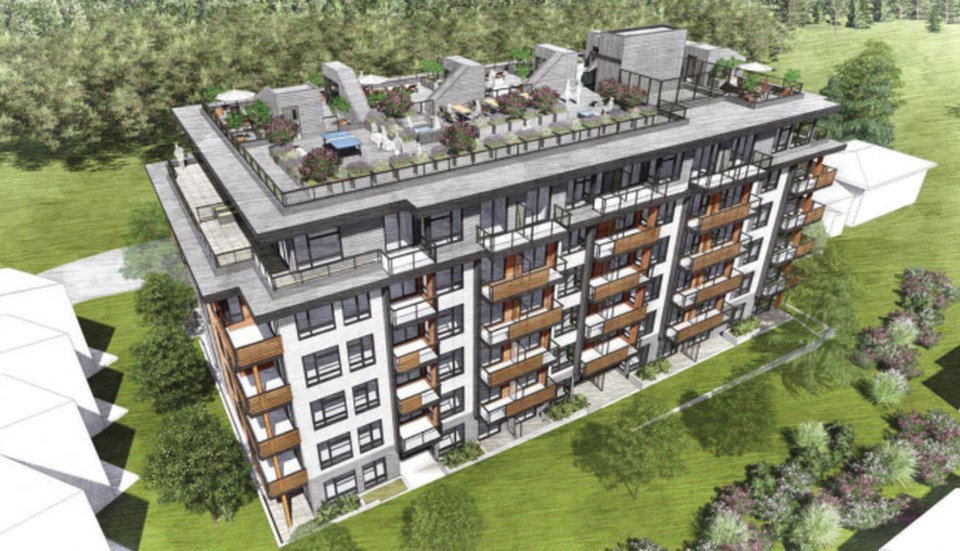Is an 88-unit condo building across from Moody Middle School a way forward to easing Port Moody’s affordable housing crisis?
Or is it a dangerous precedent that will spark the transformation of a quiet neighbourhood of single-family homes into a dense collection of similar six-storey structures?
Tuesday, a majority of Port Moody councillors decided it’s the former and approved the project by former local realtor Bill Laidler, although they also added a proviso the developer commit to making the structure more energy-efficient.
Only Coun. Diana Dilworth voted against it.
The decision came after a protracted public hearing that lasted more than two-and-a-half hours.
Most speakers endorsed the project, set to be built on two properties at 148 and 154 James Rd.
They said its collection of 35 small studio apartments and 29 one-bedroom units, along with 19 two-bedroom units and five with three bedrooms, will give young professionals and families an opportunity to buy a home in the city, or rent one of the 26 dwellings that will be available at below market rates for the next 20 years.
But some suggested the location across from the school would be more appropriate for family-oriented townhomes and the project’s approval sets the stage for larger, more dense development in the neighbourhood.
Coun. Hunter Madsen said Laidler’s last-minute offer to double the project’s affordable housing component from 13 units “is a real breakthrough” that assuages many of his concerns, including its 900-metre distance from the nearest SkyTrain station as well its density.
“The city really needs affordability,” he said.
But, Madsen added, “We need to look at what we could do as a city to make that block more of a community space.”
Coun. Steve Milani agreed, saying, “That whole street may fall into that type of build.”
Coun. Zoe Royer urged her colleagues to “look at every application on its own merits,” and where some may see a dense development of small apartments, others might see “a whole new beginning” for people looking to plant roots into the city.
“This is just going to be part of the housing continuum.”
Earlier, Laidler told council the project had evolved for the better since he pitched it as a 111-unit building with 57 micro-suites — as small as 299 sq. ft.
His partner on the project, builder Sasha Rasovic, said, “We do believe we’ve hit a home run.”
But Dilworth countered it felt more like a swing and a miss that’s neglected several elements council has demanded from other developers, like daycare and job spaces as well as environmental sustainability.
“Affordability is a priority, but it can’t be at the expense of the standards we’ve set for other developments,” she said.



